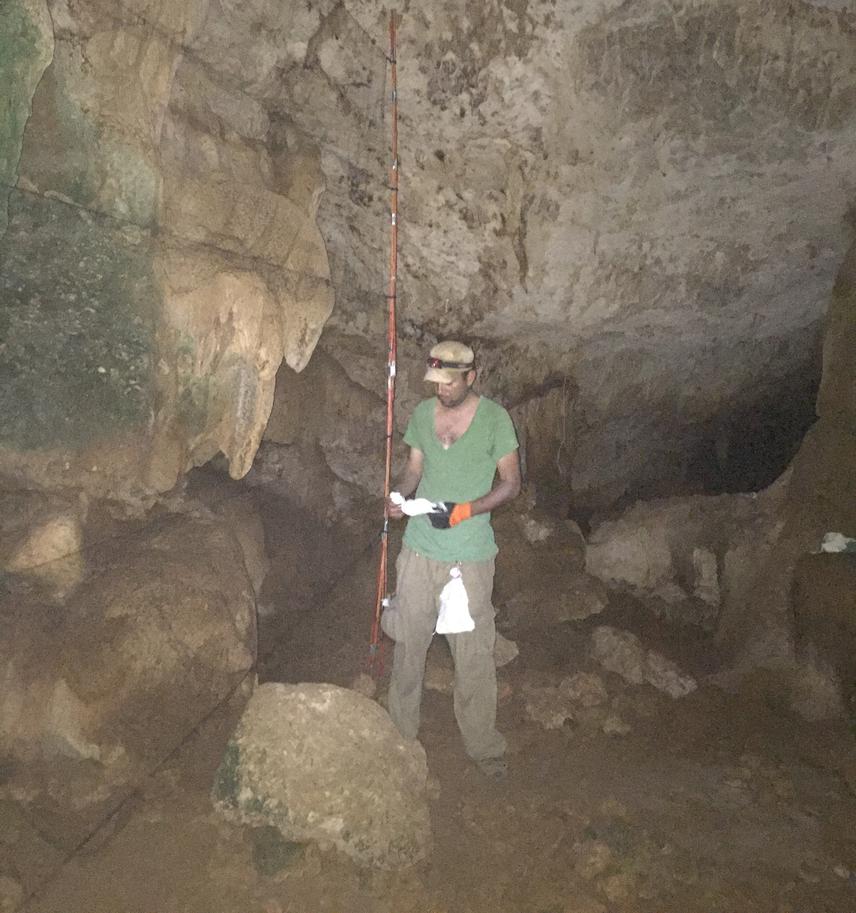Roberto-Emiliano Trejo-Salazar
Lesser Long-nosed bat (Leptonycteris yerbabuenae) is the principal pollinator of some ecological and economic important plants in Mexico such as agave and cactus groups. Moreover, females of L. yerbabuenae show a migratory behavior and nobody has described if there is an association between climatic and genetic factors with this migratory behavior. I will estimate the genetic variation of L. yerbabuenae along its distribution and find out which populations have resident and migratory members. I will also explore relationships between the population genetic structure and environmental variables that have influenced their distribution and migration patterns and how climate change can disturb them.

Catching lesser long-nosed bat in Juxtlahuaca Cave. ©Daniel Zamora.
Lesser Long-nosed bat (Leptonycteris yerbabuenae) is the main pollinator of some cultural, social, ecological and economic important plants in Mexico such as agave and cactus groups. In Mexico and USA, L. yerbabuenae is under law protection (Endangered by ESA and threatened by SEMARNAT). Therefore, L. yerbabuenae is under law protection/under risk category in Mexico (threatened by SEMARNAT NOM-059) and USA (endangered by ESA). Moreover, females of L. yerbabuenae show a migratory behavior and nobody has described if there is an association between climatic and genetic factors with this migratory behavior. I will estimate the genetic variation of L. yerbabuenae along its distribution and find out which populations have resident and migratory members. I will also explore relationships between the population genetic structure and environmental variables that have influenced their distribution and migration patterns and how climate change can disturb them. The coincidence in flowering period of agave and cactus and the Leptonycteris bats trip from center-south of Mexico to northern Mexico and southern USA, is known as "nectar corridor". This route is used by this bats genera during their migratory movements, but there are many resident bat colonies in central and south of Mexico. It is necessary to distinguish among resident and migratory colonies because that knowledge will help in conservation of scrubs and deserts ecosystems in Mexico. Therefore, people do not know much about bat's ecosystem services, and conversely bats are displaced in some places by anthropogenic actions, either directly or indirectly.
This project will complement ecological information with genetic tools that will help us to improve current conservation strategies for L. yerbabuenae and other nectar-feeding bats species, which provide very important ecosystem services.
Another contribution of my work will be to give support to friendly bats projects during tequila production process, by knowing if L. yerbabuenae population is resident in tequila lands. We can determine historical contractions (population decreases) or expansions (population increases) in natural populations, which is very important in conservation due to it is possible to infer vulnerability of species. I will be able to propose friendly strategies in commercial crops such as tequila, mezcal and pulque agave. Currently, every inflorescence in tequila agave is cut before it blooms. Thus, production of alcoholic beverages from agave plants does not contribute any source to nectar-feeding bats.